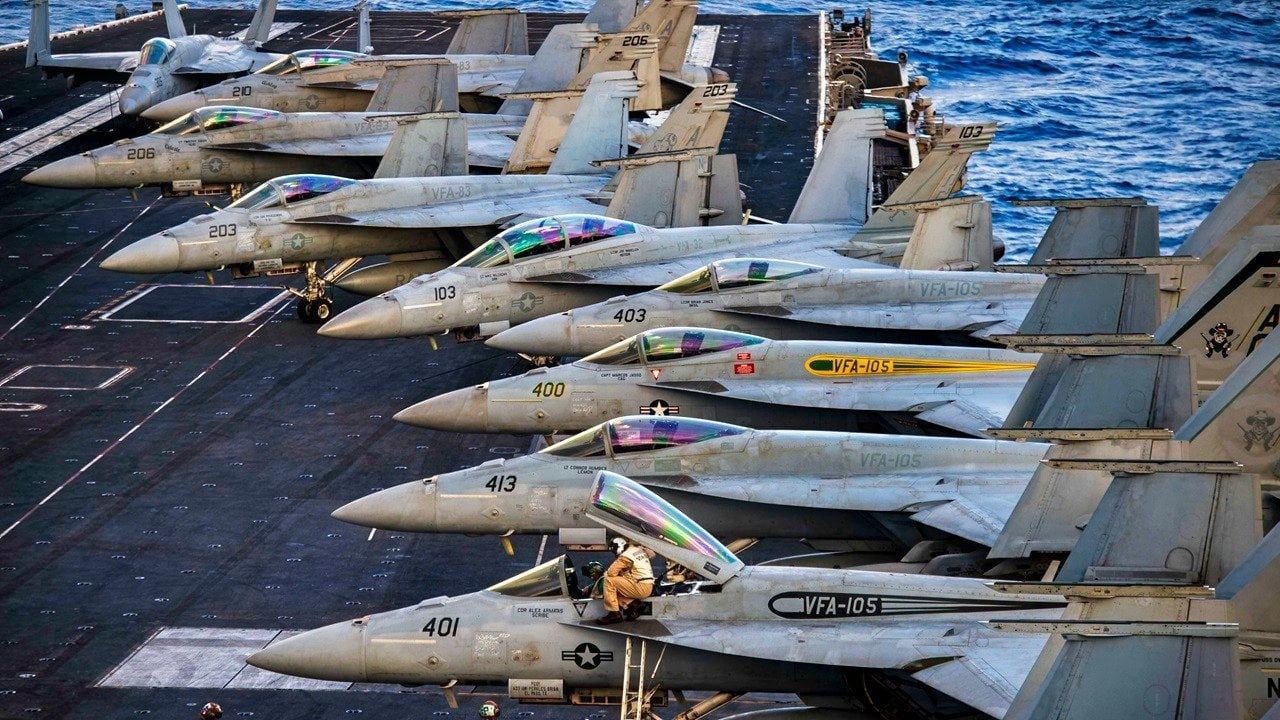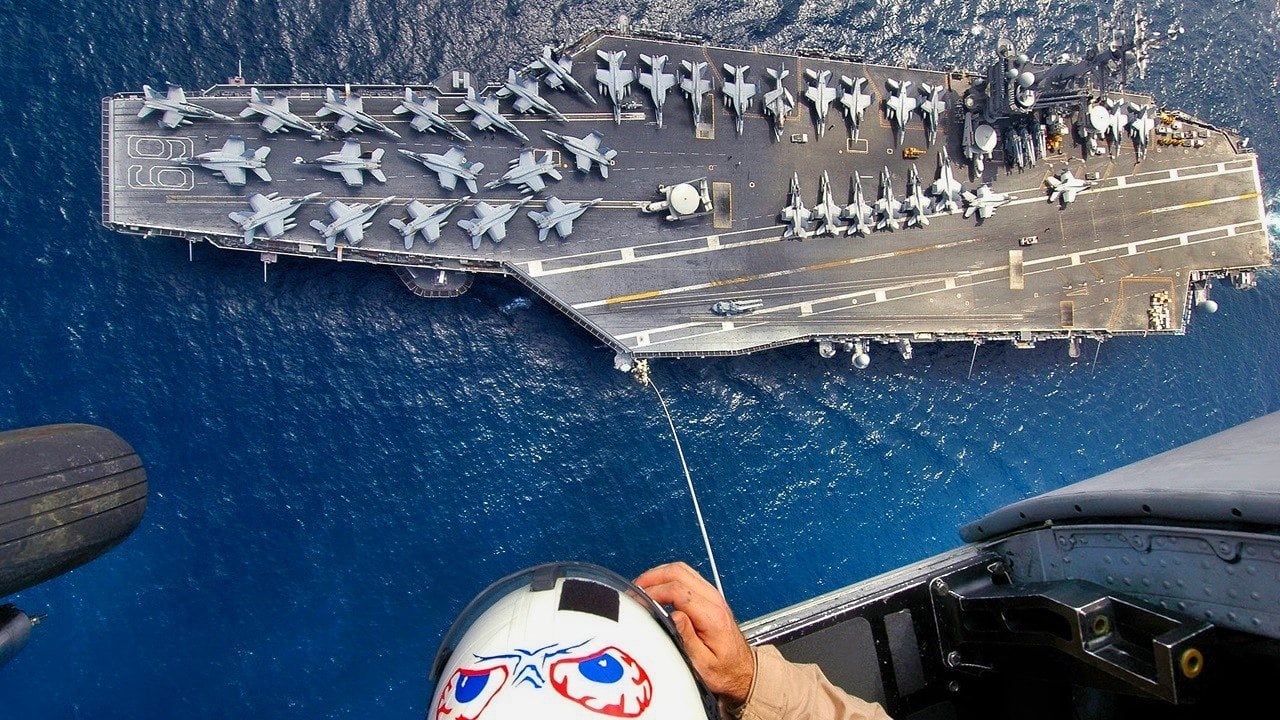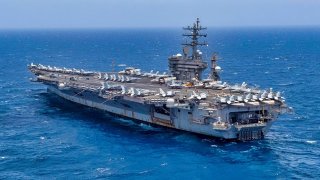USS Dwight D. Eisenhower: The Navy Aircraft Carrier the Houthis Could Not Sink
The USS Dwight D. Eisenhower Carrier Strike Group (CSG) is set to return to Norfolk, Virginia, this weekend after an eight-month deployment, which included extended operations in the Red Sea to protect commercial shipping following the Hamas attacks on Israel.
Summary and Key Points: The USS Dwight D. Eisenhower Carrier Strike Group (CSG) is set to return to Norfolk, Virginia, this weekend after an eight-month deployment, which included extended operations in the Red Sea to protect commercial shipping following the Hamas attacks on Israel.

-The Nimitz-class nuclear-powered aircraft carrier, along with the guided-missile cruiser USS Philippine Sea and guided-missile destroyers USS Gravely and USS Mason, undertook significant combat operations, including escorting 28 vessels and launching numerous missiles and weapons.
-Homecoming events are planned for Sunday for the Eisenhower and Philippine Sea, with celebrations for the Carrier Air Wing 3 on Friday and Saturday.
The Aircraft Carrier the Houthis Couldn't Sink
A hero's welcome is likely waiting for the United States Navy's Dwight D. Eisenhower Carrier Strike Group (CSG), which is expected to arrive back in port in the coming days. The U.S. Navy announced on Wednesday morning that USS Dwight D. Eisenhower (CVN-69) will finally be back home in Norfolk, Virginia, by this weekend after an eight-month-long deployment – longer than usual, due to the deployment to the Red Sea to protect commercial shipping.
The U.S. Navy's Nimitz-class nuclear-powered aircraft carrier departed Norfolk on October 14, 2023, and was deployed to the U.S. European Command area of responsibility. The carrier and her strike group were originally slated to replace the USS Gerald R. Ford (CVN-78) – the lead vessel of the U.S. Navy's newest class of supercarriers – but both flattops remained in the region following the Hamas terrorist attacks on Israel on October 7.
CVN-69 was joined by the guided-missile cruiser USS Philippine Sea (CG-58) and guided-missile destroyer USS Gravely (DDG-107), which each departed Naval Station Norfolk, and guided-missile destroyer USS Mason (DDG-87), which departed Naval Station Mayport, Florida.
A Well-Earned Homecoming Celebration
According to the U.S. Navy, homecoming events are scheduled to take place on Sunday for USS Dwight D. Eisenhower and USS Philippine Sea, while the homecoming for the Carrier Air Wing (CVW) 3 will take place on Friday and Saturday.
In addition to having her deployment twice extended, the IKECSG was engaged in some of the most intense combat operations for a U.S. Navy warship since the Second World War.
"Ike's crew successfully escorted 28 vessels, expended more than 80 air-to-air missiles and 350 air-to-surface weapons, launched more than 120 standard missiles and 100 TLAMs during defense operations and preplanned strikes against Houthi targets," WAVY.com reported.
The Iran-back Houthi militants claimed on several occasions via social media posts that they had succeeded in striking the aircraft carrier and her escorts with anti-ship guided-missiles and drones. The U.S. Navy, including the crew of CVN-69, responded with its own social media campaign that highlighted that it was business as usual for the service's second-oldest nuclear-powered carrier.
Big Stick on the Way to the Red Sea – But Gap in Indo-Pacific
Even as USS Dwight D. Eisenhower is set to arrive back in the United States, another Nimitz-class carrier is now on her way to the Red Sea to protect commercial shipping in the region and likely to confront the Houthis. The San Diego-based USS Theodore Roosevelt (CVN-71) and her CSG are now heading to the heavily-trafficked waterways and arrive in the Red Sea later this month.
However, CVN-71's deployment to the Middle East – the first time a U.S. Navy Indo-Pacific-based aircraft carrier has been sent to the region since 2021 when the U.S. evacuated the last of its troops from Afghanistan – has left a "gap" in the Pacific.

USS Ronald Reagan (CVN-76) is in the middle of the Pacific, following the end of her forward deployment in Japan, while her replacement, USS George Washington (CVN-73) is in the Eastern Pacific near South America after returning to service last spring following her four-year Refueling and Complex Overhaul (RCOH).
Author Experience and Expertise: Peter Suciu
Peter Suciu is a Michigan-based writer. He has contributed to more than four dozen magazines, newspapers, and websites with over 3,200 published pieces over a twenty-year career in journalism. He regularly writes about military hardware, firearms history, cybersecurity, politics, and international affairs. Peter is also a Contributing Writer for Forbes and Clearance Jobs. You can follow him on Twitter: @PeterSuciu. You can email the author: [email protected].
All images are Creative Commons and or Shutterstock.
From the Vault
The Russian Navy Is Dying in Ukraine
Russia's Last Battlecruiser Could End Up Just Like U.S. Navy Battleships


